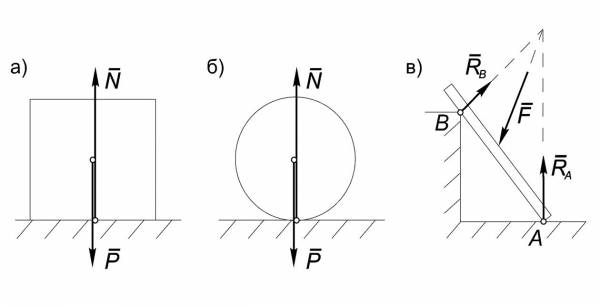The whole world consists of the movement of any bodies, including people. It obeys the various laws of physics, studying its laws. A science that studies body movements is called mechanics. In turn, it is divided into sections, one of which is statics. For the most part, it is aimed at revealing the laws of the equilibrium state of bodies.
What is static
It is worth considering this concept in more detail. Statics is a branch of mechanics where the equilibrium state of bodies is studied, that is, a reference frame is selected such that the object under study does not move regardless of the state of aggregation: solid, liquid, gaseous.
One of its main tasks is the ability to replace discarded bonds with reaction forces, which in modulus and direction depend on:
- applied active forces;
- type of communication;
- motion characteristics.
Types of equilibrium
The following types of conditions exist in which the body does not make a movement:
- Stable: if the body deviates from the equilibrium position, then a force arises that returns it to its original state of rest.
- Indifferent: the body is in balance with a slight deviation.
- Unstable: when the body leaves the equilibrium state, forces arise that try to strengthen this deviation.
If the object is not at rest, then its potential energy increases. There is a small theory of statics. It says that all bodies tend to the minimum value of potential energy, forming a potential well.
Axioms and Theories
To understand what is static, you need to at least understand its theoretical part.
- The axiom of the equilibrium state of a system of two forces: to maintain an equilibrium state of a system of a pair of forces acting on a point, it is necessary and sufficient that they be the same in magnitude and act in a similar straight line that should pass through their points of application in different directions. The axiom is also applicable to forces imposed on one point on the body.
- The axiom of discarding or adding a system of forces that is approximately equal to zero: if a system of forces acts on the body, then you can add (or drop from it) the same system equivalent to zero; the new system of forces is similar to the original.
- Axiom of a parallelogram of forces: forces applied to one point of a solid body (or material point) can be replaced by a single resultant, of the same length as the size and direction of the diagonal of a parallelogram built on initially given forces.
- The axiom of the equality of the forces of action and reaction: the forces of interaction of two material points are identical in modulus, different in direction and act on one straight line passing through the interacting points. Such forces can be applied to different contact points of one or different bodies.
- Axiom of bonds: any connection can be omitted and replaced by a system of forces, a single force or a reaction of communication.
- The axiom of solidification: if the body over which the deformation occurs is in equilibrium, then this state is not disturbed by the imposition of additional bonds on the points, including the transformation of the original body into absolutely solid.

Static Examples
What is she studying? This section of mechanics studies solids and material points that are in equilibrium. Also - laws allowing them to maintain a state of rest. That is, absolutely rigid bodies and points, on which certain actions are performed and certain forces are applied, can serve as examples of statics.
Power pair
What is statics? It does not exist without the interaction of forces with the body. A pair of forces is a system of two forces that are identical in modulus and directed in different directions.
The shoulder (denoted by d) is the minimum distance between the lines of action of the initial forces.
The rule of signs: when a pair of forces strives to move the body counterclockwise, the sign of the moment is positive. A couple of forces applied to a solid can be characterized as follows:
- action plane;
- the moment;
- direction of rotation.
Their vector moment is a vector numerically equal to the product of the force of the pairs on their shoulder and directed perpendicular to the action of the forces so that you can see the desire of the couple to move the body in a clockwise direction.
Physics is a very interesting and useful science, the knowledge of the fundamentals of which is necessarily useful in life. This article discusses what is statics, as well as the main theorems and axioms associated with this concept.